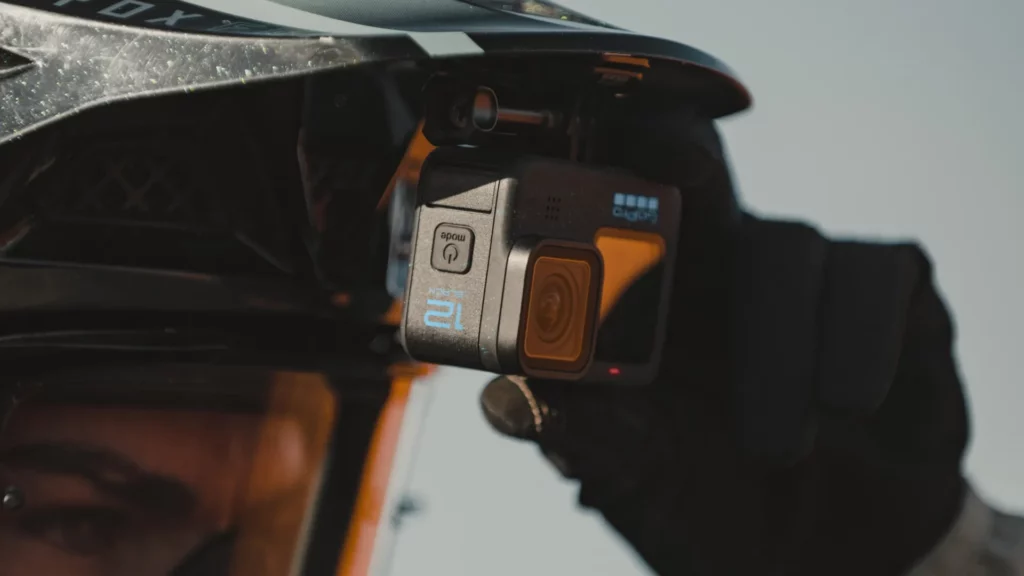New year, new action cam models. And this time the comparison is as close as ever at the top!
GoPro dominated the action cam market for years. But now DJI and Insta360 have caught up for a three-way battle for the crown. You can’t really go wrong anymore, but there are certain cameras and features better suited for mountain bike filming.
For the Suspension Traveler YouTube channel, I made 100+ downhill mountain biking POV videos. And based on what I learned, this is how I rank the current best action cameras.
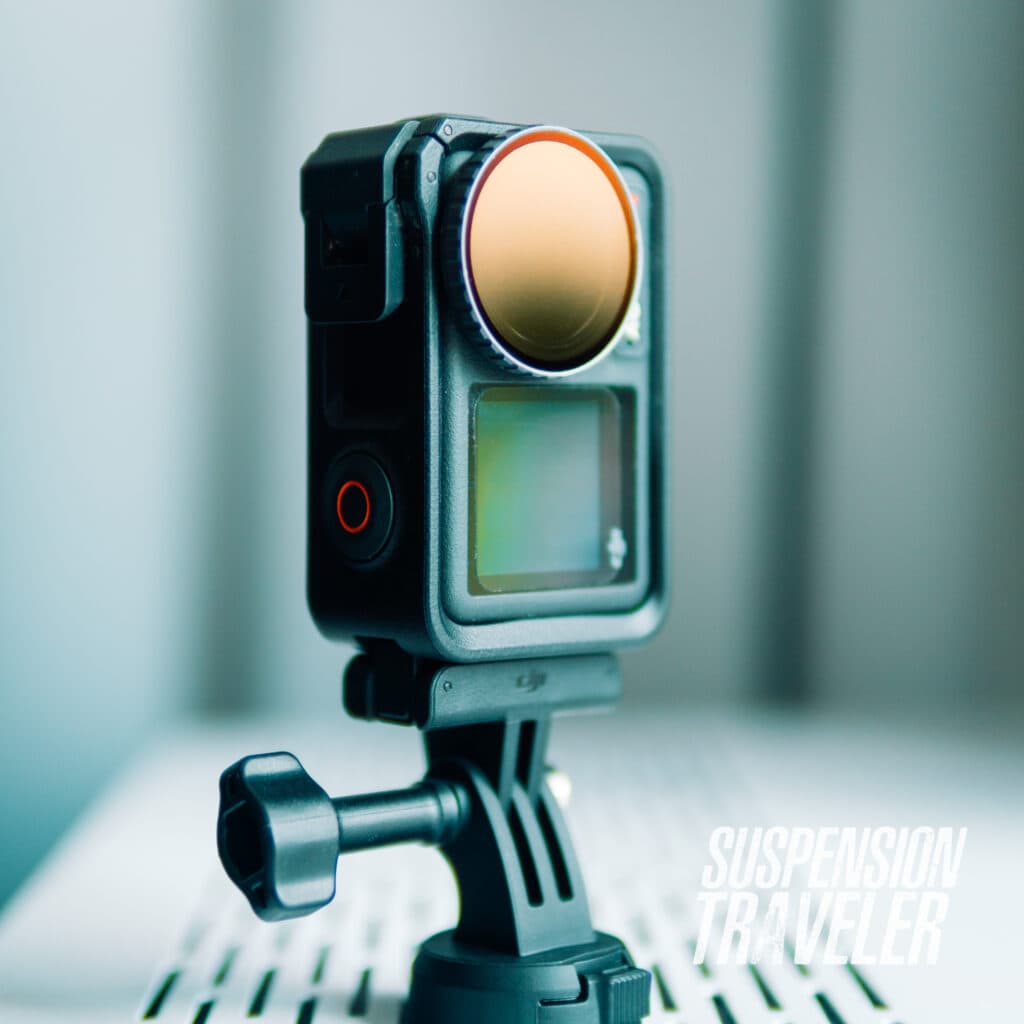
Best Overall
DJI Action 4
Quality: ⭐⭐⭐⭐⭐
Usability: ⭐⭐⭐⭐⭐
Accessories: ⭐⭐⭐⭐
Price: ⭐⭐⭐⭐
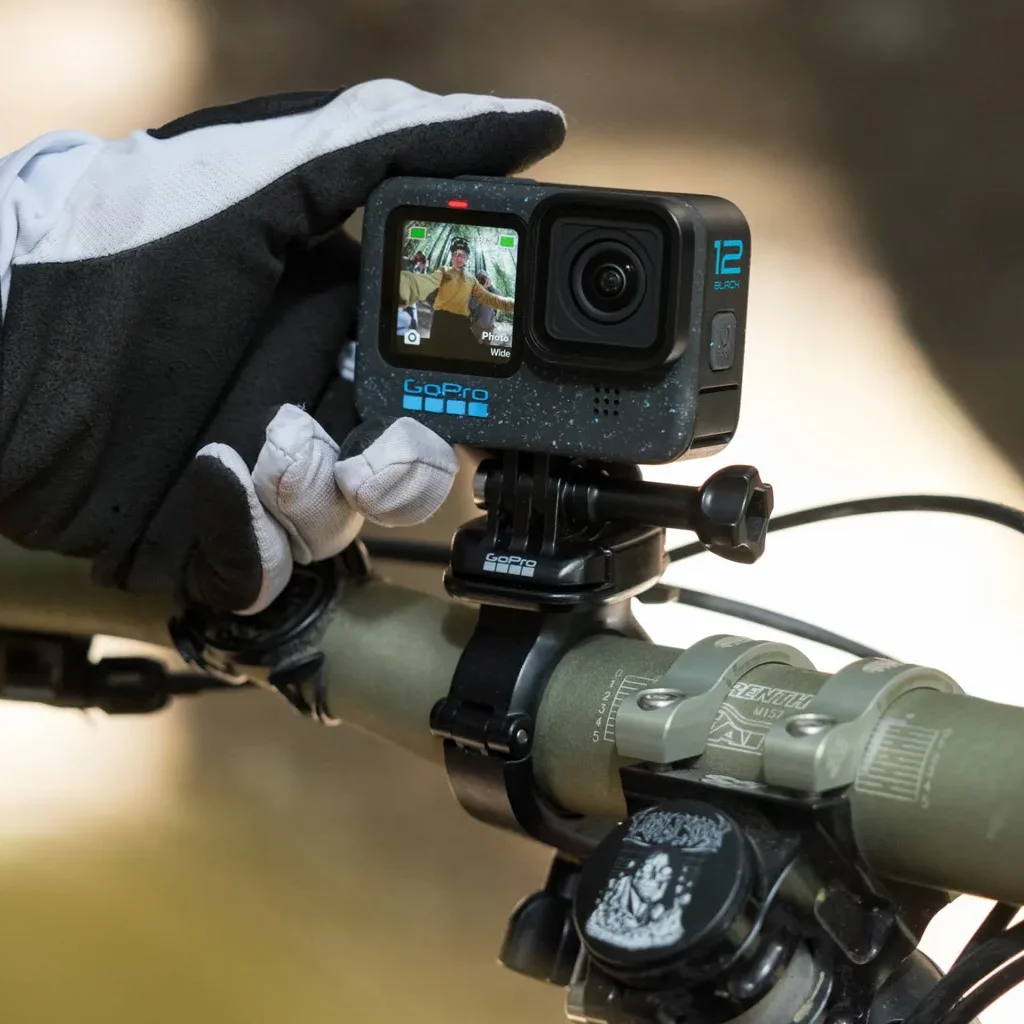
Runner Up
GoPro Hero 12
Quality: ⭐⭐⭐⭐⭐
Usability: ⭐⭐⭐⭐
Accessories: ⭐⭐⭐⭐⭐
Price: ⭐⭐⭐⭐
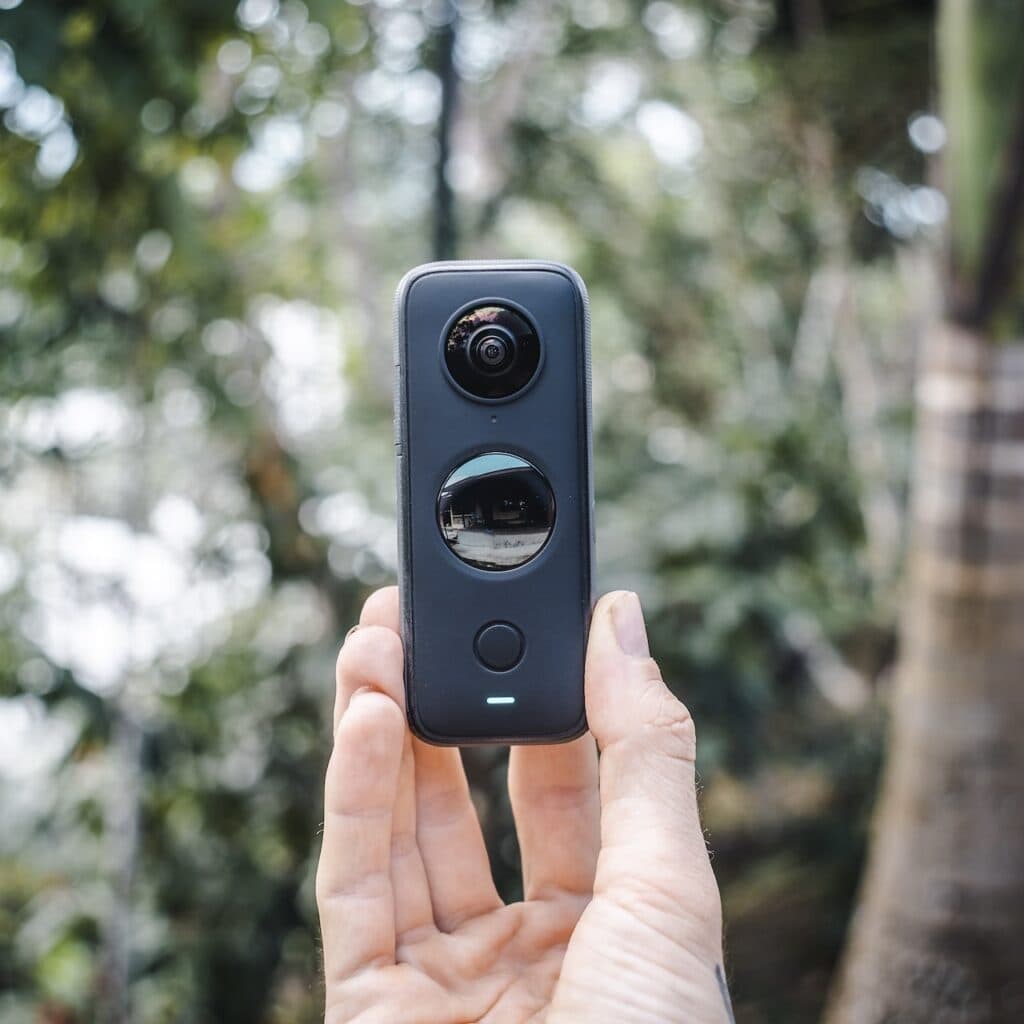
Best 360° Camera
Insta360 X3
Quality: ⭐⭐⭐⭐
Usability: ⭐⭐⭐
Accessories: ⭐⭐
Price: ⭐⭐⭐
Best Overall Camera
DJI Osmo Action 4
Quality: ⭐⭐⭐⭐⭐
Usability: ⭐⭐⭐⭐⭐
Accessories: ⭐⭐⭐⭐
Price: ⭐⭐⭐⭐
This camera is simply amazing. It makes me question how it’s even going to get better from here.
It has everything you need to film bike rides: Crisp footage, amazing stabilization, good audio, vertical mode, magnetic mounting, 10-bit colors, long battery life and pro settings to get amazing cinematic video.
And on top of that, it’s still competitively priced.
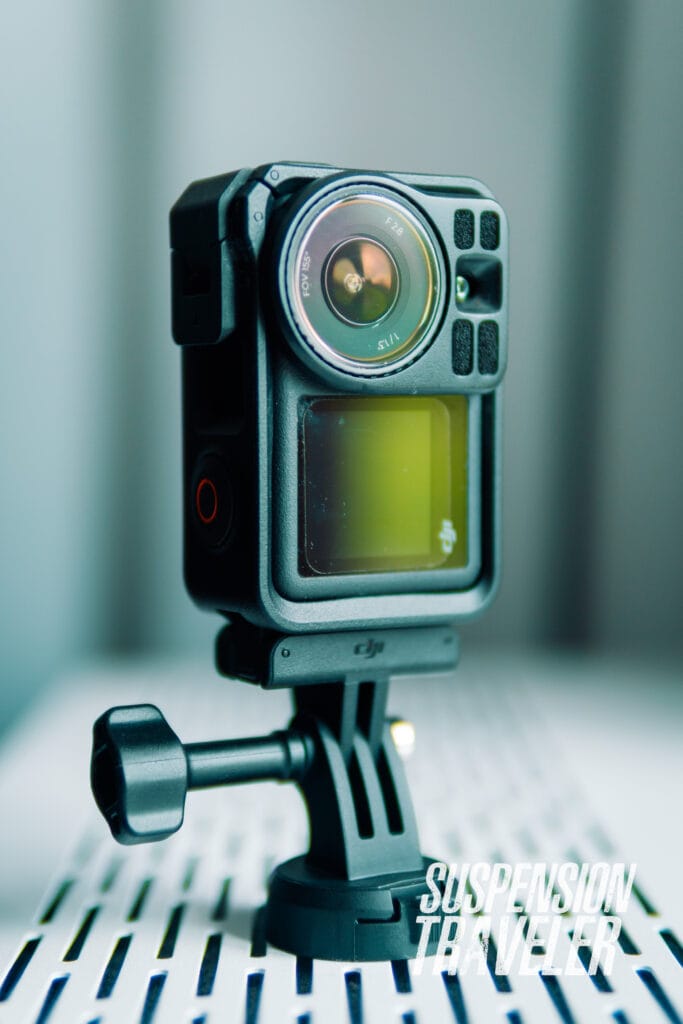
The Osmo Action 3 was a great camera – top of the class in usability but a little behind on video quality. Now with the Action 4, all those little weaknesses are gone making it the best package overall for MTB videos. And it’s getting even better with the constant firmware upgrades DJI is known for.
DJI’s Rocksteady stabilization is among the best on the market. And with one of the biggest fields of view (FOV) at 155° it’s perfect for creating a sense of speed, showing steepness and capturing as much as possible in every scene: trail and bike in one frame.
On top of all that, the magnetic mount returns. It’s extremely valuable for biking, where the perfect camera angle is everything. Using these magnets, the adapter stays in place at the right angle, resulting in consistently good footage.
It’s even compatible with every single GoPro mounting accessory out there. Here are the best Action 4 accessories I use for biking I use to make my downhill MTB POV vids, like this one:
Example Footage
✅ Pros
- Professional-level video settings
- Consistently great exposure and image quality
- Huge number of features and modes
- Excellent stabilization
- Long battery life
- Extremely user-friendly magnetic mounting
- One of the widest fields of view at 155° (crucial for MTB)
- 10 Bit colors
- D-Log M color profile for color grading
- Good built-in wind noise reduction
- Same mounting “fingers” as GoPro, for a wide variety of mounts to use
- Replacable lens cover
- Vertical mount for Insta, YT shorts, TikTok
- Dedicated Low-Light mode
- Constant firmware upgrades
❌ Cons
- User interface can get overwhelming, but it also has default beginner mode
- Tall due to the magnetic mounting adapter
- Mandatory Mimo App
- No cloud upload
Read the full DJI Action 4 review here.
Second-Best Action Cam
GoPro Hero 12 Black
Quality: ⭐⭐⭐⭐⭐
Usability: ⭐⭐⭐⭐
Accessories: ⭐⭐⭐⭐⭐
Price: ⭐⭐⭐⭐
The biggest, noteworthy changes since the Hero 11 are HDR mode, GP-Log color profile and a smaller price tag. There are a couple more specifically for photo mode, but all those are completely irrelevant for POV MTB riding.
There’s also the improved battery life, that’s mostly aimed at 5.3K resolution filming – which again may not be useful for many riders.
It’s a step above the Hero 11 but leaps ahead with a couple of (expensive) accessories. There are tons of compatible ones but only a few Hero 12 accessories perfect for MTB.
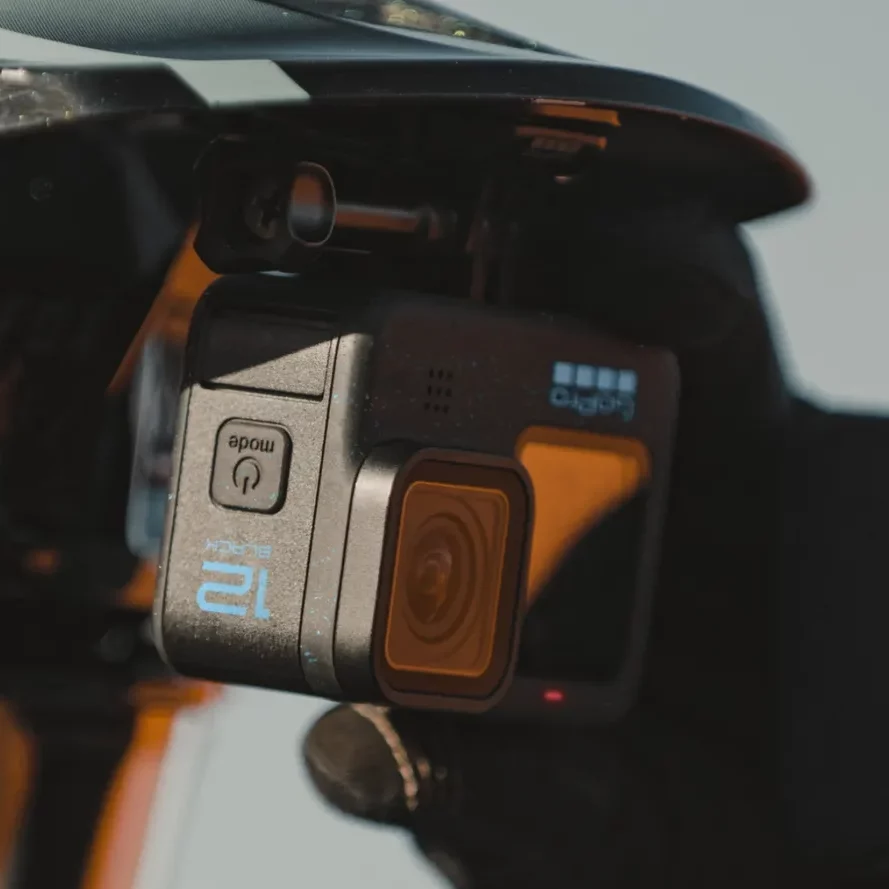
And that’s really its only downfall. Surpassing what the Osmo Action 4 can do requires a bigger budget – so it’s your decision whether that extra performance is worth it to you. But even out of the box, using the best settings for cinematic footage the GoPro Hero 12 could be mistaken for an expensive cinema camera on your helmet, that’s for sure.
It uses the same 8:7 sensor as the Hero 11, which captures raw footage in an aspect ratio close to a square. This is extremely versatile. From very wide fields of view to vertical video, everything is possible just using the camera’s software – even after recording using the Quik app.
HDR mode made the move over from photo mode to video mode. Nice to see for improved color and contrast in difficult lighting like direct sunlight or sunsets. GoPros have always been very well exposed anyway, so this is icing on the cake.
The bigger impact comes from the new GP-Log profile to provide even more freedom to color grading over the Flat profile. Similar to DJI’s D-Log, this is a proprietary Log profile that captures maximum information in a bland-looking profile. So you have to color grade when using it – like with GoPro’s own LUT.
Similar to the DJI Action 4, it has horizon leveling, which fixes the horizon while the camera rotates – like using a gimbal. But that’s only available in de-warp lens mode, so only of limited use for MTB. Unless you spend some extra cash …
Where the Hero 12 truly shines is in combination with the new Max Lens Mod 2.0 that provides a stunning 177° FOV and wide FOV Horizonleveling all at 4K resolution. Everything you need for epic MTB POVs!
As the MLM 2.0 is a $100 add-on, the total package is getting significantly more expensive. Add to that a second battery to get you through a whole day. If this bundle was priced better, the Hero 12 would take the win in my book.
A quick word on the GoPro Hero Mini 11, which is basically a smaller, lighter Hero 11 with major compromises. It’s in a similar price range while missing main features like replaceable battery no real benefits for bikers. Photo mode and hindsight mode are also missing. I thought you should know to make the best decision.
Example Footage
✅ Pros
- Professional-level video settings
- Consistently great exposure and image quality
- Huge number of features and modes
- New HDR mode (High Dynamic Range)
- Excellent stabilization
- 8:7 sensor with the ability to change image crop after recording
- 10 Bit colors
- GP-Log & Flat profiles for color grading
- Relatively good built-in wind noise reduction
- Most accessories and mods available
- Vertical lens mode for Insta, YT shorts, TikTok
- Replacable lens cover
❌ Cons
- No front touchscreen
- User interface can get overwhelming, but it also has an easy mode
- No shutter speed limits (min-max)
- Still not the best battery life
- GoPro cloud upload too slow to be useful
- Hardly any big firmware updates
Best 360° Camera For MTB
Insta360 X3
Quality: ⭐⭐⭐⭐
Usability: ⭐⭐⭐
Accessories: ⭐⭐
Price: ⭐⭐⭐
With a 360 camera there are usually some compromises to take into account, and the X3 is no difference. Compared to GoPro’s and DJI’s top models, it falls a little behind in terms of video quality, price and form factor.
Especially the tall, long housing is what decreases its usability on a mountain bike. It’s just awkward to wear mounted on a helmet or chest rig.

While it falls short on usability compared to regular action cams, it’s in a league of its own within the 360° cameras.
Even compared to the newer Insta360 ONE RS 1-Inch modular camera which is heavier, more expensive and not even classified as an action camera by Insta360 – not waterproof, not durable etc. And also compared to the GoPro Max, which is overall amazing, but showing its age now with limited image resolutions. That would be the best budget 360 cam tho.
The X3 is a dedicated 360 cam and it shows with some unique features for a complete powerhouse package. It’s basically a professional-grade camera with tons of settings and options to get the best footage out of it. While filming and in post-production.
It’s also one of the few options eliminating the dreaded “GoPro effect” – the fact that trails always look less steep, and less scary on POV video. With a huge FOV in 360-mode, the trails actually look steep like you experience them on the bike.
That 360 mode is also what allows it to keep the horizon horizontal like a gimbal (saving extra accessories) even in the widest FOV setting – something other cams can’t do.
While a handlebar mount isn’t my preferred accessory, if there was ever a camera to take full advantage of it, it’s this one. Since you can change the angle and direction even after filming in editing, a 360 cam like this is perfect for third-person shots of yourself riding! Switching between front and rear-facing shots within the same ride.
Example Footage
✅ Pros
- Massive 5.7K video resolution in 360 mode
- 4K single lens (like a regular cam)
- Flat LOG color profile for color grading
- Active HDR video mode
- Best at showing steepness
- Good audio quality
- Big touchscreen
- Removes selfie stick from footage
- Auto-track persons or objects for follow-cam
- Horizon-leveling in wide FOV
- Adjust point of view & angle after filming
- Lighter than Insta360 ONE RS 1-Inch
❌ Cons
- Tall form factor not ideal for MTB (clumsy on helmet and chest mounts)
- Expensive
- No 4K slow-mo framerates
- Non-replacable lens covers
- 360-mode requires editing
The Smallest Action Cam
Insta360 GO 3
Quality: ⭐⭐⭐
Usability: ⭐⭐⭐⭐
Accessories: ⭐⭐⭐
Price: ⭐⭐⭐⭐
There isn’t a smaller camera on the market that can shoot a wide 120-degree field of view with this level of stabilization. The Insta360 GO 3 is a fraction of the size of competing action cams, yet it still packs big features into its tiny and extremely light (26.5 grams!) footprint.
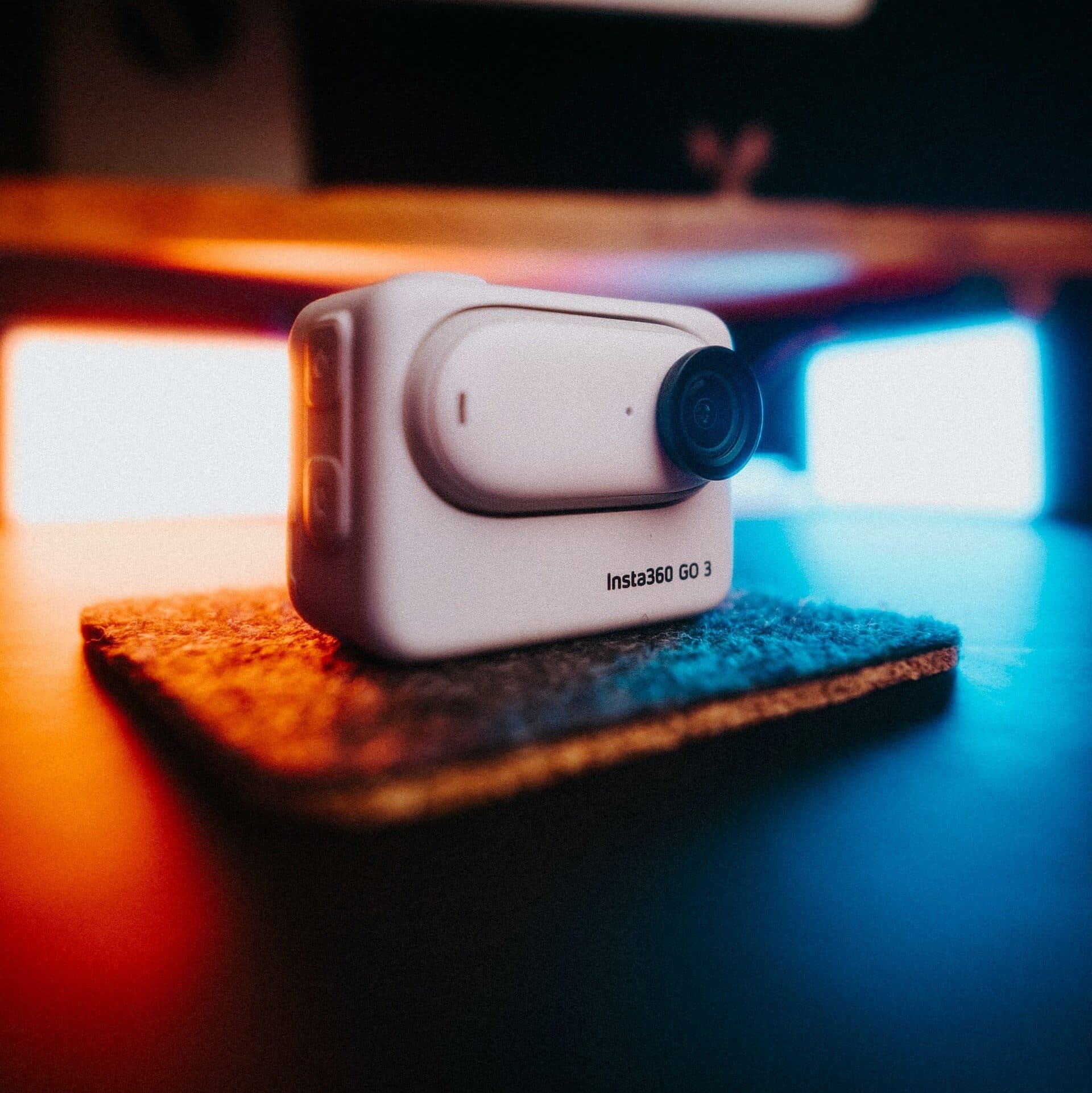
Despite the name, it can’t film 360° videos, but has a vertical mode for content catering to platforms like Instagram, YouTube shorts and TikTok.
It comes with a handy carry case and its own design of a clip mount. Additionally, it can make use of the widespread GoPro adapters, increasing both the footprint (as it sits vertically like in the picture) and the variability
While the actual camera unit doesn’t look like much, the image quality for such a tiny thing is impressive. The size is definitely a compromise tho. Settings, colors, exposure and most of all the audio quality are lacking. Especially wind noise is deafening.
Compared to the other action cams on this list, you are probably better off with a heavier, more capable, and rugged camera platform in most use cases on a bike. The GO 3 isn’t class-leading in any of the criteria for video quality, only in the size department making it the one that’s most likely on you in your pocket.
Example Footage
✅ Pros
- Tiny, unnoticeable form factor
- Extremely light
- Wide 120° FOV
- Good video quality
- Good stabilization
- Can mount to standard action cam accessories
❌ Cons
- Worst audio quality of all on this list
- Lacking features
- No screen
- Max of 64GB internal memory
- Poor battery life
Now let’s get into how to actually choose the best camera you can currently get for biking so you can make the best decision for yourself.
Buyer’s Guide: Important Action Cam Features for MTB POV
POV cams come with a ton of features and not all of them are useful for mountain biking. These are the most important criteria in a helmet cam for filming your POV videos:
Image stabilization
Ever watched a downhill POV from 5 or more years ago? It was nearly unwatchable and even hard to make out anything with all the shaking going on.
Only modern image stabilization makes our MTB footage actually enjoyable to watch. With a good camera it makes no difference where it’s mounted to – helmet, chest or bike – it’s perfectly stable and without any shakes at all.
Field of view (FOV)
A wider FOV can help with a couple of effects: the sense of speed, showing steepness and capturing reference points the viewer can identify with like the handlebar, hands and bike frame as well as the trail ahead.
The wider the FOV, the more of that is in the picture.
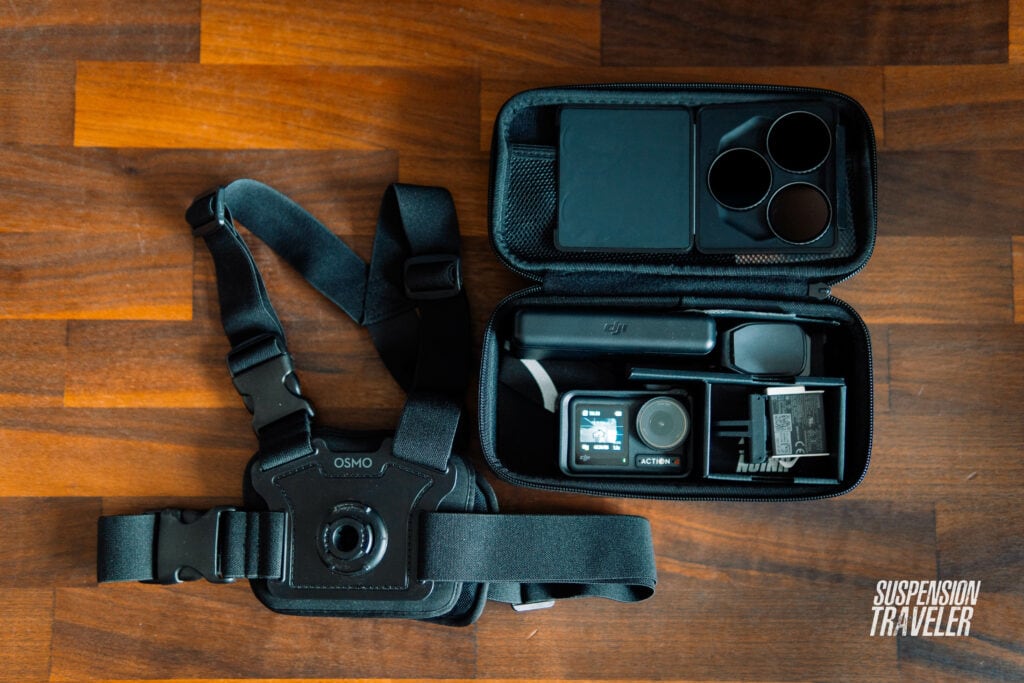
Mounts & Accessories
The helmet cam must be mounted somewhere. The ability to mount to a wide variety of objects is the unique selling point of action cams. Incidentally, all on this list can make use of the same, established GoPro mount – the two little feet with a hole through them. This opens up all the first and third-party mounts.
Battery life
Outlets are rather hard to come by on a mountain. When you spend all day on the trails, long battery life is critical. This or at least replacable battery units to keep the camera rolling. Those batteries are usually tiny, taking up no space in your pocket, backpack or hip-pack.
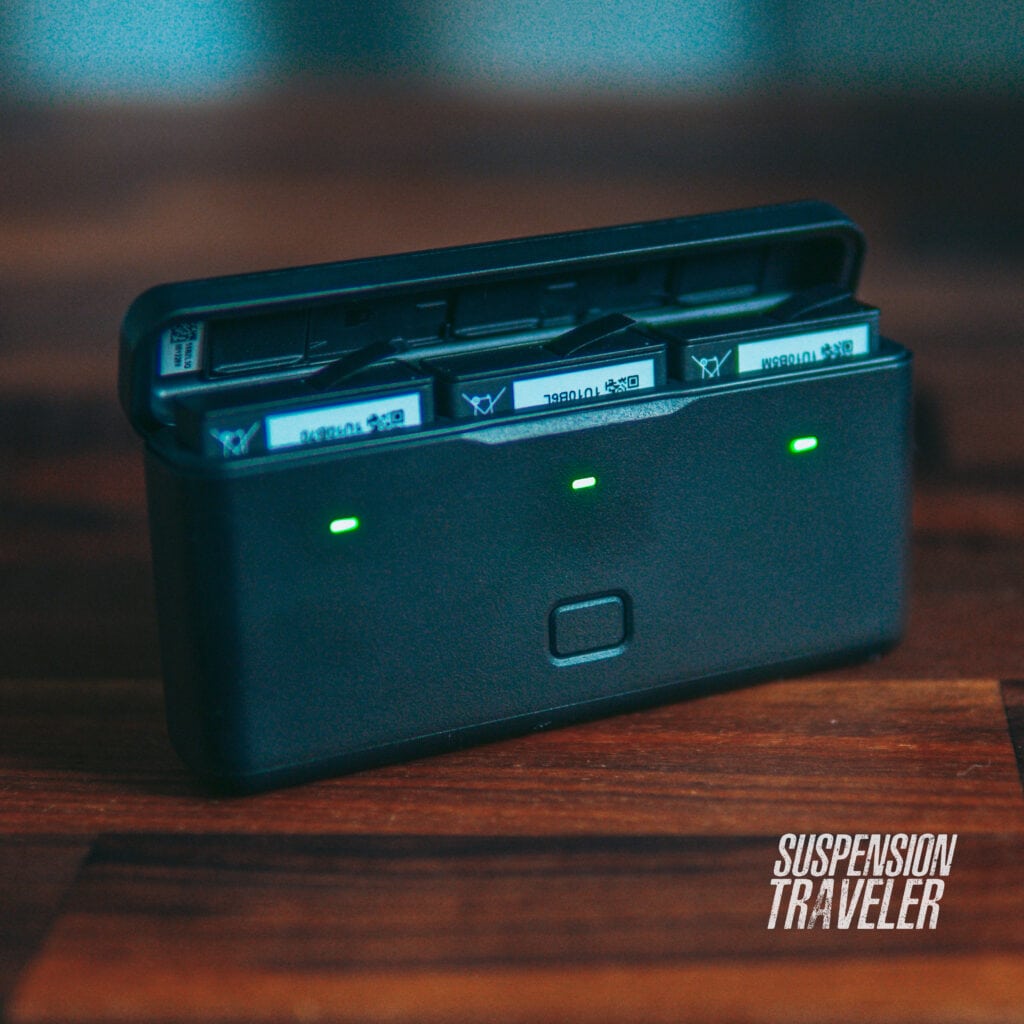
Size & Weight
The best size and weight are those that go noticed. Overall height is actually the most important measurement. Only a low profile can mount below a helmet visor for one of the most immersive views possible. And on top of a helmet, the risk of catching branches is higher with a taller camera.
Next, vertical mounting or a tall form factor gets in the way while riding. They regularly bump on handlebars when using a chest mount and chin mount or get hung up on tree branches on top of a helmet.
And lastly, heavier cameras tend to bounce around much more on a chest mount resulting in jitters even on the highest stabilization settings.
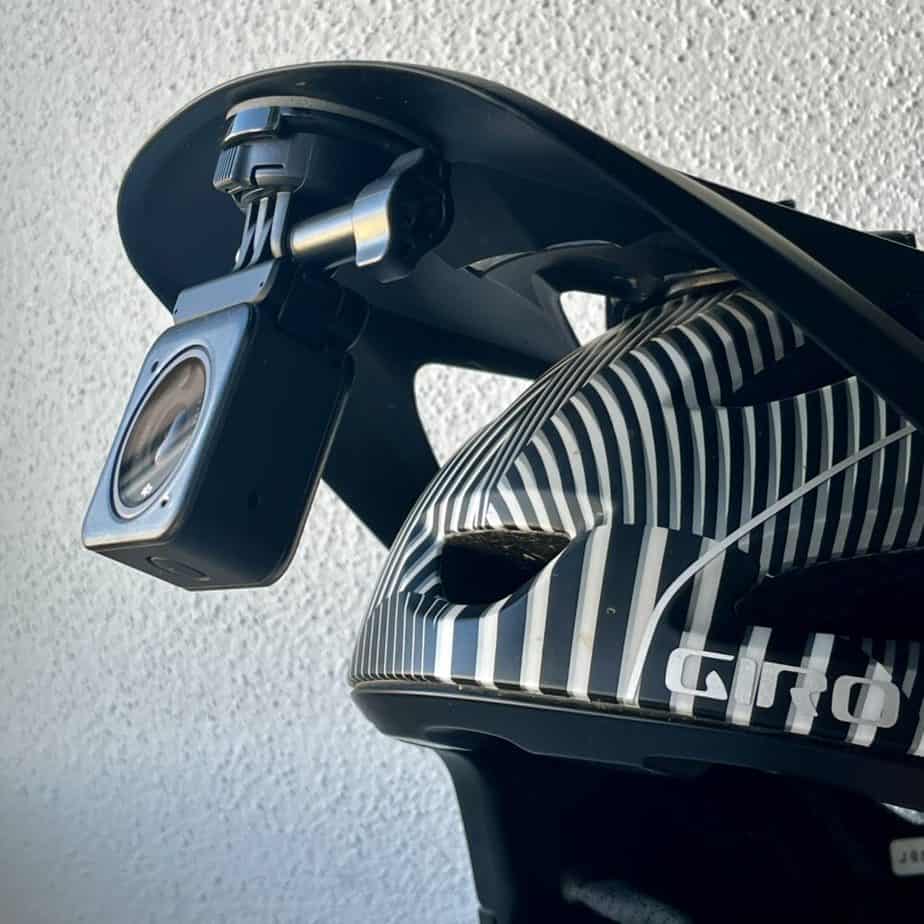
Irrelevant features for MTB
And then there are a couple of features highlighted in commercials or spec sheets but have very little application to bikers who film POV (point of view).
High Framerates (frames per second )
First and foremost is a number, that keeps going up year after year, but is actually irrelevant to most of us. Unless you plan on slowing down the footage in an editing program for extreme slow-motion effects, high framerates are pointless and only fill up the memory quicker. I exclusively shoot in 25 or 30 fps.
Photo mode
With both hands on the handlebar, taking photos is actually impossible. Or is it? At least with a dedicated photo mode. Most action cams have such good stabilization and resolution, that most people just take screenshots of their video footage. Hint: All my YouTube thumbnails are produced that way.
Ultra high resolution
Anything above 4K is currently nice to have, but ultimately of little practical use for most of us. The higher the pixel count, the bigger the SD card and computer hard drive needs to be. And the more powerful the editing machine has to become to keep up.
It’s a waterfall of tech requirements from one simple feature or video setting. That’s why I stick to 4K. That’s the common resolution of current high-res screens anyway.
Recap
At prices for a high-tech cam hovering at around $400, it’s not out of reach. Forking over 500 bucks and above isn’t necessary to film great videos.
Even cameras from previous years are not far behind and are worth a look.
Whatever your decision falls on, don’t forget the bread and butter of any action cam: stabilization, and accessories (chest mount is a must for MTB. It’s always in my POV camera bag).
Besides a cam and your favorite mount, all else is optional. And the greatest benefit of all is having those amazing days of riding forever caught on camera – to relive those memories is priceless!

My #1 Recommendation: DJI Osmo Action 4
The OA4 is super easy to use, has top video and audio quality, a wide selection of first and third-party accessories, pro settings to dial in, vertical mode, long-lasting batteries and magnetic mounts for quick and easy dismount out on the trails – all at a reasonable price.
What more can you ask for?
Please note, that I use affiliate links to the product pages for your convenience.
Make sure to compare prices and shipping costs for your location.
